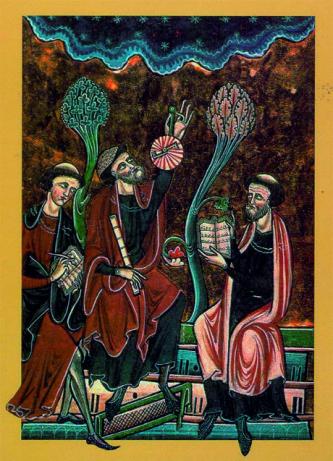Observation is the most pervasive and fundamental practice of all the modern sciences, both natural and human. It is also among the most refined and variegated. Observation educates the senses, calibrates judgment, picks out objects of scientific inquiry, and forges communities. Its instruments include not only the naked senses, but also tools such as the telescope and microscope, the questionnaire, the photographic plate, the glassed-in beehive, the Geiger counter, and a myriad of other ingenious inventions designed to make the invisible visible, the evanescent permanent, the abstract concrete. Where is society? How blue is the sky? Which way do X-rays scatter? Over the course of centuries, scientific observers have devised ways to answer these and many other riddles—and thereby redefined what is under investigation by the way in which it is investigated. Observation discovers the world anew.
Like experiment, observation is a highly contrived and disciplined form of experience that requires training of the body and mind, material props, techniques of description and visualization, networks of communication and transmission, canons of evidence, and specialized forms of reasoning. And like scientific experiment, scientific observation emerged, flourished, and diversified under specific historical conditions. Even though there was never a time before experience, there was a time before the scientific experiment—and the scientific observation: these were forms of “learned experience” (as they came to be called in the seventeenth century) that had to be crystallized out of vernacular practices and conceptualized as evidence and proof.

Fig. 2: Astronomers at work. Psalter of Blanche of Castille. Paris, Bibliothèque de l’Arsénal, ms. 1186, fol. 1r (Paris, ca. 1226-32). The central figure is making an observation using an astrolabe. The figure on the left appears to be recording the result of the observation while the one on the right consults a text, possibly a very early ephemerides or set of astronomical tables.
Yet in contrast to experiment, scientific observation lacks its own history: why? Countless studies in the history and philosophy of science treat one or another aspect of observation: observation through telescope and microscope, observation in the field or in the laboratory, observation versus experiment, theory-laden observation. But observation itself is rarely the focus of attention and almost never as an object of historical inquiry in its own right. Observation seems at once too ubiquitous, too basic, and altogether too obvious to merit a history. One might well wonder whether a history of observation wouldn’t simply be the history of science in its vast entirety—or the still more vast history of experience.
Histories of Scientific Observation (Chicago: University of Chicago Press, 2011), the product of the Working Group on Scientific Observation at the Max Planck Institute for the History of Science, challenges these assumptions by showing what a history of scientific observation might look like, at least in its broad outlines, from the fifth to the late twentieth century. Three framing essays trace the slow rise of observation from the proverbial wisdom of sailors and shepherds to the keystone of all the empirical sciences, an arc that spans the fifth through the eighteenth centuries. Fourteen case studies from both the natural and human sciences since the seventeenth century spotlight how observers have scrutinized everything from seaweed to X-ray radiation, household budgets to the emotions—with ingenuity, curiosity, and perseverance verging on obsession.
Observation turns out to have a long, surprising, and epistemologically significant history, full of innovations that have enlarged the possibilities of perception, judgment, and reason. It is also a history of how experience has been shaped and sharpened to scientific ends: how the senses have been schooled and extended; how practices for recording, correlating, and displaying data have been developed and refined; and how the private experiences of individuals have been made collective and turned into evidence.
